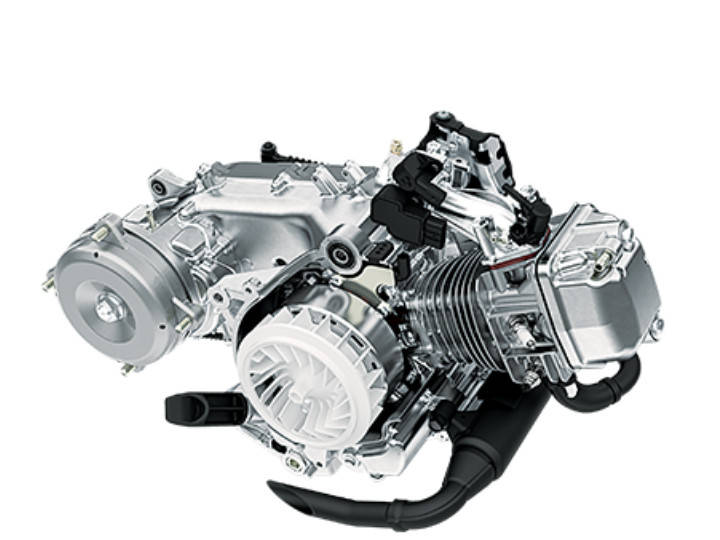
It’s now been nearly 4 months since BS6 emission norms came into effect, and almost all the bikes and scooters sold in India have been updated to meet the stricter regulations. Most recent among these to receive the updates was the TVS Scooty Zest BS6, which was launched a couple of days ago at Rs 58,640. Like all the BS6 updates we’ve seen so far, this new version is more expensive than its BS4 predecessor, by around Rs 6,000 in this case. And the biggest reason behind these price hikes is the addition of a fuel-injection system. So what exactly is it? And how did bikes work before fuel-injection came into the picture? Let’s take a look:
To understand why a fuel-injection (FI) system is needed, we first need to understand its predecessor: the carburettor. Both FI and carburettors do the same job: mixing air and fuel in the correct proportions before it’s sent into the engine.
The diagram above shows a carburettor’s layout. Air enters at the top, flows through a narrow constriction region, then past a throttle valve, and into the engine at the bottom. As it passes through the constricted region (called the venturi or throat), its velocity (the speed at which it is flowing) increases. This may seem counter-intuitive, but look up the principle of continuity in fluid mechanics and you’ll find that it’s true.
At this point, it’s important to note that the throat region of the carburettor has a small tube or a nozzle that’s connected to the float chamber, where fuel is stored after being sent from the fuel tank. As the air’s velocity increases, its pressure decreases (because of something called the Venturi effect). As a result of this, the air passing through the venturi region has a low pressure, whereas the float chamber has a relatively higher pressure. This imbalance causes the fuel to flow from the float chamber, through the nozzle, and into the airstream. Hence, the air and fuel are mixed together before they enter the engine.
Since this process is controlled entirely by physics and there are no electronics involved, carburettors are simple and cheap to manufacture. However, they only offer a limited amount of accuracy and precision, which is where fuel-injection systems come in.
An FI system consists of three primary components: a fuel pump, fuel injectors and an ECU. The fuel pump is usually placed inside the fuel tank itself, and its job is to simply pressurise the fuel and send it to the fuel injector.
The fuel injector is usually placed just before the inlet valve of the engine. It receives this high pressure fuel from the pump and injects it into the airstream at the appropriate time using a needle valve. The movement of the needle valve is controlled electronically by the ECU, which is basically the bike’s own little computer.
The ECU’s job is to send the right signal at the right time to the fuel-injector. If the engine needs more fuel (during large throttle openings and/or at high RPMs), the needle valve is kept open for slightly longer; to cut down on the fuel supply, the needle valve is closed earlier. By controlling the timing of the needle valve’s opening and closing, the amount of fuel injected into the engine can be precisely controlled. This accuracy is exactly what’s needed in order to minimise tailpipe emissions, and another advantage is that the engine can be made more fuel-efficient too.
As is plainly evident, an FI system is more complex in construction and operation, and requires more parts, making it more expensive to manufacture and more difficult to repair if it goes long. The good news is that they rarely ever do go wrong, as opposed to carburettors which can be quite finicky, especially in low temperatures or at high altitudes.
from ZigWheels https://ift.tt/3hxQiB8

0 comments:
Post a Comment